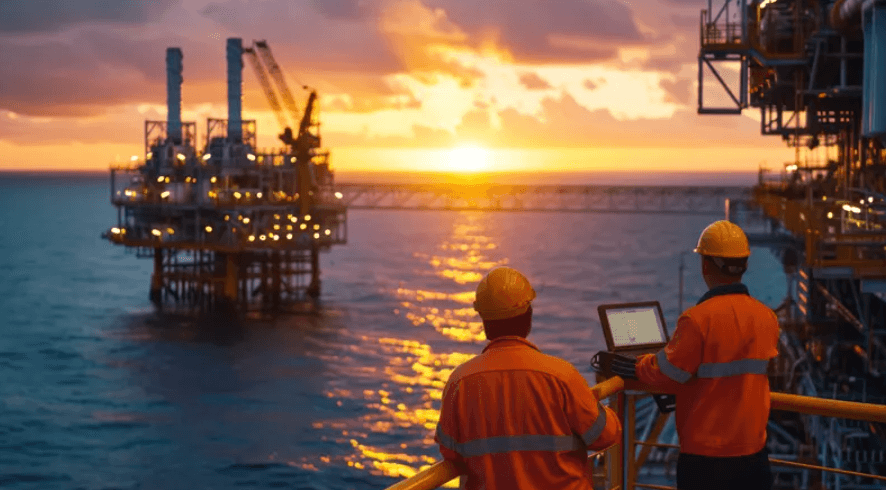What Is Involved in Offshore Decommissioning?

Offshore oil and gas platforms, subsea pipelines, and related infrastructure have driven energy production for decades. However, as fields reach the end of their productive life, these structures must be removed or safely repurposed, a complex and crucial process known as offshore decommissioning. This process not only restores marine environments but also ensures safety, mitigates legal liabilities, and meets regulatory requirements. Offshore decommissioning is no longer just an afterthought; it’s a key consideration in planning sustainable energy futures. Understanding what’s involved in this intricate process is essential for industry stakeholders, regulators, and environmental stewards alike.
Understanding Offshore Decommissioning
Offshore decommissioning involves the safe retirement of offshore oil and gas infrastructure, such as platforms, wells, pipelines, and subsea installations. The process begins with a thorough planning phase, assessing structural integrity, environmental considerations, and regulatory compliance. Operators must submit detailed decommissioning plans that align with local and international standards. This phase also involves consultations with stakeholders, including governmental agencies, environmental groups, and local communities. While decommissioning can be costly and logistically challenging, it plays a pivotal role in minimizing environmental impact and ensuring long-term marine ecosystem health.
Key Phases of the Decommissioning Process
The decommissioning journey is divided into several key phases: planning, preparation, execution, and post-decommissioning monitoring. During planning, engineers conduct structural assessments, environmental impact studies, and risk analyses. Preparation involves activities such as flushing pipelines, isolating wells, and removing hazardous materials. The execution phase covers physical dismantling, including cutting, lifting, and transporting components for recycling or disposal. Post-decommissioning monitoring is essential to ensure no residual pollution or hazards remain in the marine environment. Each stage requires collaboration between engineers, environmental scientists, and regulatory bodies to ensure a smooth transition.
See also: Cybersecurity Best Practices for Small Businesses
Practical Tips for a Successful Offshore Decommissioning Solution
Implementing an effective offshore decommissioning solution involves meticulous preparation and innovative approaches. First, accurate asset inventories and condition assessments help prioritize tasks. Leveraging advanced technologies, such as remotely operated vehicles (ROVs) and 3D modeling, streamlines complex operations. Efficient scheduling and logistics reduce costs and minimize operational disruptions. Moreover, involving experienced decommissioning contractors ensures compliance with international best practices. Finally, operators should prioritize sustainability, exploring options to repurpose structures, like creating artificial reefs, where feasible.
Addressing Environmental Considerations
Offshore decommissioning projects must adhere to stringent environmental regulations designed to protect marine ecosystems. These include measures to prevent the release of hydrocarbons and contaminants, managing waste materials responsibly, and minimizing disturbances to marine life. Environmental impact assessments (EIAs) are conducted before decommissioning activities commence, identifying potential risks and mitigation strategies. Practical actions, such as controlled cutting techniques and debris containment systems, reduce harm to the environment. Ultimately, adopting a proactive approach to environmental stewardship is central to any responsible offshore decommissioning solution.
Managing Risks and Safety Concerns
Decommissioning offshore infrastructure presents significant safety challenges, including exposure to hazardous materials, structural instability, and adverse weather conditions. Operators must implement rigorous safety protocols, including hazard identification, risk assessments, and emergency response planning. Personnel must be trained in decommissioning-specific safety procedures, while real-time monitoring systems enhance hazard detection. By incorporating lessons learned from previous projects, companies can develop robust safety frameworks that protect both workers and the environment throughout the decommissioning process.
Cost Considerations and Financial Planning
A comprehensive offshore decommissioning solution requires careful financial planning to account for the high costs associated with dismantling and disposal. Budgeting should include contingencies for unexpected challenges, such as equipment failures or weather delays. Early-stage cost assessments help identify opportunities for optimization, including the use of modular lifting systems or shared decommissioning resources across multiple projects. Companies can also explore financial partnerships or government incentives to offset expenses. A well-planned financial strategy ensures that decommissioning operations remain viable without compromising safety or environmental responsibility.
Regulatory Compliance and Legal Frameworks
Offshore decommissioning activities are governed by national and international regulations that specify environmental, safety, and operational requirements. Regulatory bodies, such as the UK’s Offshore Petroleum Regulator for Environment and Decommissioning (OPRED) or the US Bureau of Safety and Environmental Enforcement (BSEE), oversee compliance and approve decommissioning plans. Operators must submit detailed documentation, including environmental impact assessments, structural integrity reports, and waste management strategies. A clear understanding of regulatory obligations ensures that decommissioning projects proceed smoothly, reducing the risk of fines, legal disputes, or delays.
Innovative Approaches and Emerging Technologies
The offshore decommissioning landscape is evolving rapidly, with innovative solutions emerging to tackle complex challenges. Technologies such as advanced cutting tools, autonomous subsea vehicles, and real-time data analytics are transforming the way decommissioning projects are executed. For example, using ROVs for subsea operations reduces the need for diver interventions, enhancing safety and efficiency. Additionally, digital twin models enable engineers to simulate dismantling scenarios, identify potential risks, and optimize procedures. Embracing such technologies allows companies to develop more efficient and cost-effective offshore decommissioning solutions.
Case Studies: Real-World Applications
Several offshore decommissioning projects worldwide offer valuable insights into best practices. For instance, the decommissioning of the Brent field platforms in the North Sea demonstrated the importance of detailed planning and stakeholder engagement. Similarly, projects in the Gulf of Mexico highlighted the benefits of collaborative frameworks between regulators and industry players. These case studies underscore the need for early-stage environmental assessments, transparent communication, and the use of innovative technologies. Learning from real-world examples equips operators with the knowledge to tackle their own decommissioning challenges effectively.
Conclusion:
Offshore decommissioning is a critical component of the energy industry’s transition toward sustainable and responsible operations. By understanding the processes involved, stakeholders can plan decommissioning activities that prioritize safety, environmental protection, and cost-effectiveness. Successful projects combine thorough planning, innovative technologies, and a commitment to regulatory compliance. As the industry continues to evolve, embracing best practices and collaborative approaches will be essential to delivering responsible offshore decommissioning solutions. By doing so, we not only meet today’s operational needs but also contribute to a cleaner, healthier ocean environment for future generations.





